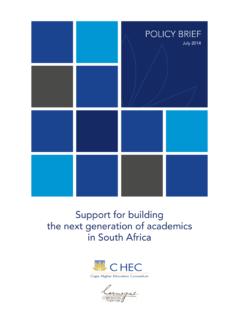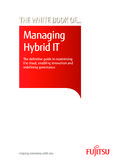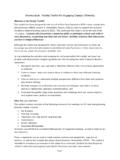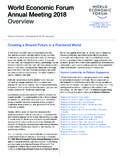Transcription of INVESTING APPROACHES FOR endowments and …
1 INVESTING APPROACHES FOR endowments and foundations One Maritime Plaza, Fifth Floor San Francisco, CA 94111 Hall Capital Partners LLC INVESTING APPROACHES for endowments and foundations Hall Capital Partners LLC 2009 Page 1 There has never been a more difficult time to be a trustee of an endowment or foundation. The performance of the markets in the past year has had a dramatic impact on these pools, and questions swirl about the validity of the endowment model of INVESTING . Trustees are acutely aware of the numerous challenges in overseeing an investment portfolio including unprecedented market volatility and government interventions.
2 The events of the past two years have thrown the challenges facing Investment Committees of foundations and endowments into sharper relief, and Investment Committees can expect to continue to operate in an environment of increased market risk, a proliferation of investment choices, and the additional complexity of INVESTING globally. As fiduciaries, Investment Committees also find themselves operating in an environment which has featured several extremely damaging and embarrassing frauds. The burdens of both initial and ongoing due diligence have increased as have requirements for continuing assessment of risk and risk management systems for the charitable pool s investment portfolio and that of underlying managers.
3 New requirements for audit and other monitoring have created additional layers of cost and frictions. Investment Committees are also re-visiting the spending formulas pursuant to which the endowment contributes to the institution. Each charitable investment pool is unique. Pools differ in many aspects including size, duration, whether further donations can be counted upon or not, or whether spending or granting purposes are tightly restricted or not. The time horizon of various institutions can vary from a virtually perpetual one to a quite short horizon based on the mission of a non-profit to spend itself out of existence in a defined period.
4 Investment Committee structures differ as well. Investment Committees can be large or small; they can be quite distinct from the Finance Committee of the Board or a sub-committee of the Finance Committee. The investment skills of Committee members vary dramatically as does the level of engagement of committees. However, whatever the nature of the charitable investment pool or of a Board s Investment Committee, at the core of the Investment Committee s task is the question of how to manage the assets of an endowment to generate the best possible returns and fulfill the fiduciary duties assumed by the Committee. Finally, it is critical for the Investment Committee to be well integrated with the broader institution to ensure that there is a good alignment with broader institutional objectives, budget and other operating constraints.
5 In this challenging and complex environment it is not surprising that many non-profits are delegating or outsourcing a portion or all of their portfolios to investment advisors. Casey Quirk estimates that in the past four years fully outsourced assets have grown from $97 billion to $195 billion and that the outsourcing pool will grow to $510 billion by 2012, representing 13% of assets and 25% of investors. Detailed below are some of the key questions that Investment Committees are discussing today: What is the investment objective and what are the relevant constraints? The investment objective defines an investment return goal for an organization and asset allocation provides a framework to achieve that investment objective.
6 The most important test of an asset allocation plan is whether it is appropriately customized and designed to help an organization achieve its investment objective while staying within its constraints. For example, a foundation that is in spend-down mode will clearly have a different investment objective and asset allocation than a perpetual endowment that has annual inflows from new donations. Hall Capital Partners LLC INVESTING APPROACHES for endowments and foundations Hall Capital Partners LLC 2009 Page 2 There are several ways for Investment Committees to think about investment objectives which serve to frame its goals. These typically include a relative performance measure in which the investment objective is to earn an average annual compound return that consistently exceeds median institutional performance for its peer group as well as an absolute performance measure where the investment objective is to meet an x% distribution requirement, plus y% to account for inflation and preserve purchasing power.
7 Key constraints or defining characteristics that often are faced by Investment Committees and need to be factored into both objectives and asset allocations include: Calculation of spending rate Percentage of the operating budget of the organization that is expected to be funded by the endowment Predictability (or lack thereof) of cash flows into and out of the investment portfolio Time horizon and the amount of capital that can be deployed in illiquid investments It is essential for Investment Committees to consider how different factors will interact in perfect storm scenarios. It is quite likely that in difficult investment markets an institution will also be faced with reduced annual fund support and more requests for financial aid.
8 What is the endowment model? Is that model of INVESTING still valid? How should the Investment Committee think about asset allocation and investment decisions? Like the term hedge fund the term endowment INVESTING has come to refer to such a broad range of APPROACHES that it requires further definition to be meaningful. endowment INVESTING , in its simplest form, is not one asset allocation or approach. Rather, it is based on the premise that an endowment s inherent advantage of a long time horizon may be maximized by creating a globally diversified pool of investments, including some which are illiquid. In any investment environment, it is critical for endowments and foundations to make thoughtful asset allocation decisions.
9 Below are some key lessons and considerations: Appropriate liquidity is paramount. During the recent crisis some investment pools were forced to sell investments at trough prices to fund short-term liquidity needs that could not be delayed. An appropriately sized liquidity pool allows investors to hold assets during periods of interim volatility. It is important that this liquidity pool is comprised of truly conservative investments, ideally Treasury Bills, rather than other assets that can create incremental risks, such as cash plus or corporate bonds. All Investment Committees need to have a clear understanding of the potential liquidity needs of their institutions in both benign and adverse market conditions.
10 Illiquid commitments should be sized appropriately within these constraints. Further, a careful liquidity analysis upfront can spare a punitive forced liquidation in difficult markets. Some endowments may find it useful to create a segregated liquidity pool of relatively short duration to provide the institution with operational flexibility to meet several years of liquidity needs and to avoid having such short-term requirements unduly dominate or be lost within asset allocation. Illiquid investments should generate a substantial premium. It can be very beneficial for long-term pools to take advantage of their INVESTING horizon by making long-term investment commitments.







